Aquí Vamos
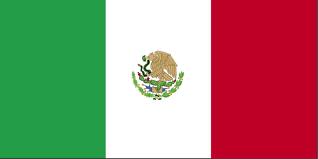
Liz, Don Pedro (Your humble author), Jean and Keith on tour in Mexico.
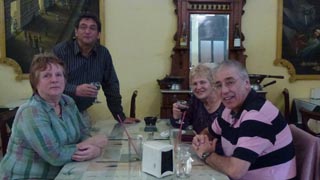
Once everything has loaded, use the slider-bars to scroll left, right up and down.
For optional excursions click the [MAPA] links. They open in a new window and provide extra information.
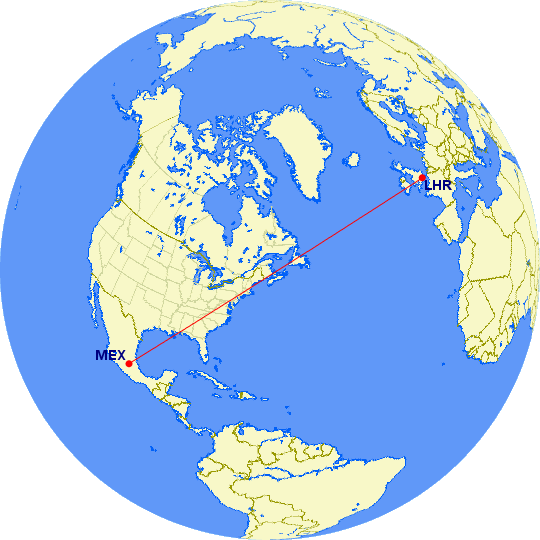
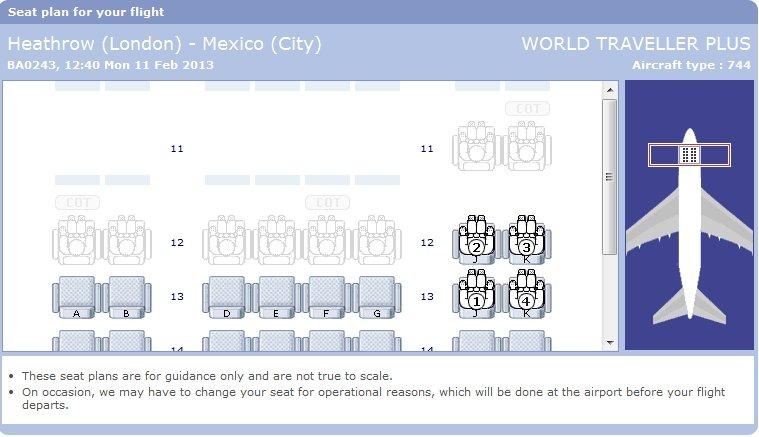
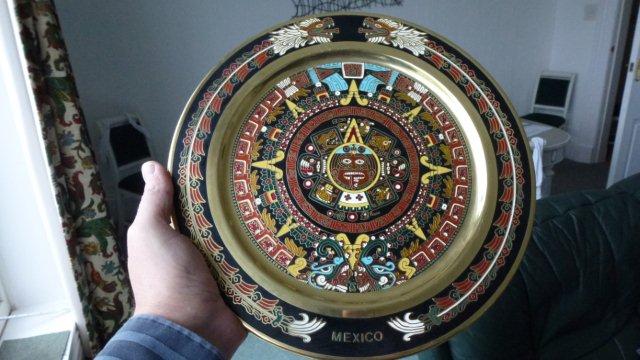
Mexico Monday. Before Christmas I purchased this beautifully enamelled metal plate for 50p from a junk shop in Blackpool. Today seems the right time to hang it on the wall.
Mexico City
Shrove Tuesday. Our hotel is located in Mexico's central plaza, the Zócalo, [MAPA] which is the second largest in the world. Surrounded by some of the finest buildings of the colonial era lie the remnants of one of the Aztecs' principal monuments, the Templo Mayor. Our guide is Maria, she takes us downtown to see the murals in the Palacio Nacional which were painted by the famous Mexican artist Diego Rivera.
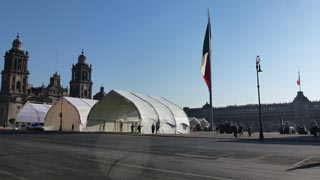
Having been built on a long dried up lake and subject to many earthquakes the buildings are twisted and deformed and the ground slopes. The cathedral has amazing tilts to the ceiling and floor. Combined with a little jet lag and the altitude of 2,420 m, the effect induces a bit of sea sickness. We stop for a rest and enter a small unassuming doorway to find ourselves in a huge colonial cafe society restaurant. We find a table on the fourth floor and try the Jugo Verde, a drink made from Celery, Nopal (Cactus), OJ and Parsley. That did the trick.
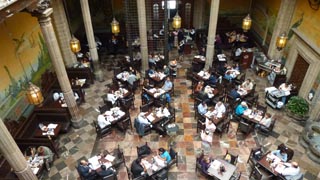
We ended with the Anthropological Museum. Architect Pedro Ramírez Vázquez's distinguished design provides the proper home for one of the finest archaeological collections in the world. Each salon on the museum's two floors displays artefacts from a particular geographic region or culture. One of the best relics is the calendar stone and we notice that the Blackpool plate's design is a copy of it.
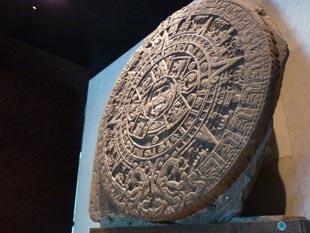
Back at the hotel roof terrace we see in the square the México flag the size of Old Trafford. For hundreds of years there has been a military ceremony to raise it at sunrise and lower it at sunset. A band marches in and soldiers peel off forming a cordon around the square. The top brass arrive. We watch them lower it and it takes sixteen men to grapple and carry it away.
We talk to our guide about the Olympics which were held in Mexico City and were where the Mexican wave was invented. The common feeling seems to be that London was very well appreciated here and the Opening Ceremony was a triumph.
Teotihuacan
Ash Wednesday. We journey by road Northwards to the ancient Toltec city of Teotihuacan visiting both the Pyramids of the Sun and the Moon. Poorly understood, two centuries of monumental construction made Teotihuacan the largest and most populous urban centre in the New World. The city seems to have functioned for centuries until a sudden collapse. We climb to the top of the Sun Pyramid and have a rewarding view of the whole city.
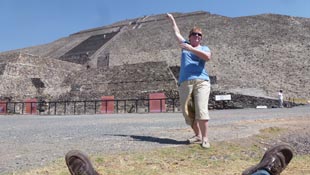
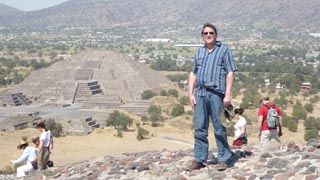
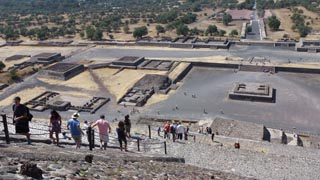
A new ring road circles the city with many shops and restaurants on the side which could be the beginnings of a new town to support tourism.
Returning to our hotel at the centre of Mexico we hit some traffic. The method of driving here is unlike anything we have seen. Wide four lane roads are used by everything but changing lanes quickly is required to navigate. If the traffic is moving, this is done suddenly without indicating. If the traffic is stationary, inching forward relentlessly. Broken down vehicles in the middle of these roads cause havoc. Selfish parking yet more. Typically when lights go red, four lanes of six cars will jump them. But the traffic keeps moving and although the taxis and busses are scarred by collisions all seems well here.
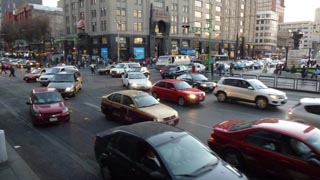
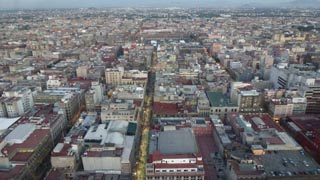
After a rest we go down town on foot to the pedestrians area. The 41st floor of the Latinoamercan Security Tower seems a good place to have a drink and watch the Sun set. We see the vastness of this city in all directions. We all agree that the hotel terrace bar has given us wonderful food so far, so we return again for another steak.
Rio Grande
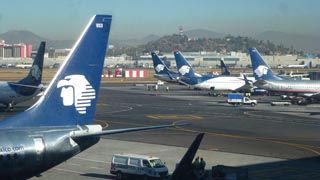
Valentines Day. Flight AM 553 Aeromexico. At the airport all the personnel in the first line of security are in wheelchairs. A message to the World.
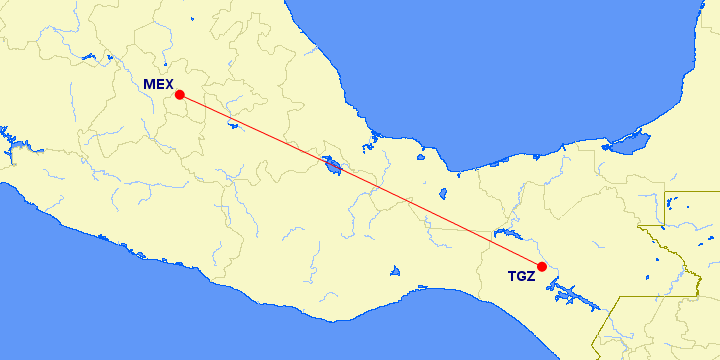
Checking the web we discover that the rules for obtaining a driving licence are different in each state and range between signing a declaration to say you can drive, to having to pass a written test. We meet Alberto and go straight to the head of the spectacular, 1km deep Sumidero Canyon on the Rio Grande. [MAPA] Created 35 million years ago through a combination of tectonic forces and erosion from the river. The canyon was the stage for an epic battle between the Spanish and the Chiapanecan Indians, who chose to jump into the sacred canyon rather than submit to the invaders.
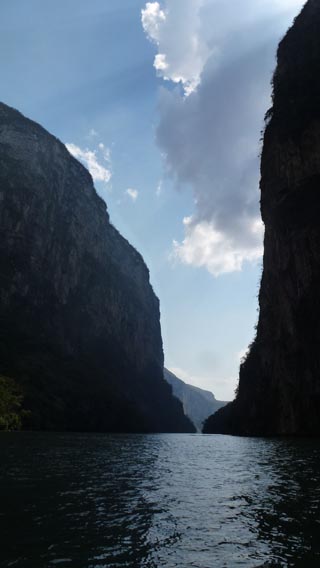 Misleading photo: The canyon is now flled with 40m of water thanks to the dam.
They jumped into a very small trickle of water much farther below.
Misleading photo: The canyon is now flled with 40m of water thanks to the dam.
They jumped into a very small trickle of water much farther below.
More recently, the area just south of the canyon was chosen by the Mexican government as the site for a huge hydro-electric project, which now supplies electricity to much of Chiapas but also saw the relocation of a small village from what is now the bottom of a large lake to the surrounding highlands. The canyon is 13km in length, so to get to the dam and back in two hours the boat travels quite fast.
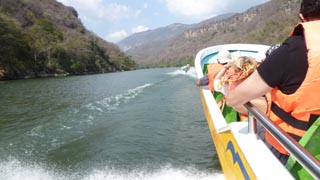
Nevertheless there is time to turn the engine off and drift quietly to view the abundant wildlife. Iguanas, crocodiles and bird life such as white herons, cormorants and kingfishers.
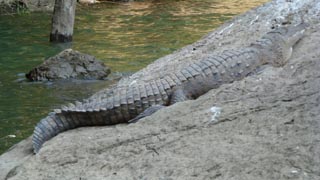
We are heading to San Cristobal De Las Casas located at an altitude of 2000m in the hills. An amazing day ended with four steaks somewhere in the grid iron maze of narrow streets near our hotel.
Indian villages
Asteroid Friday.
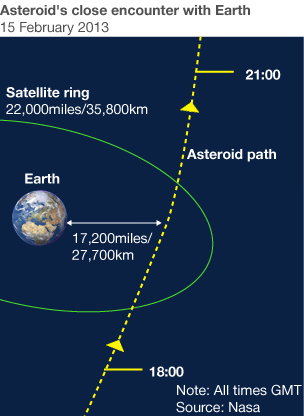
While 2012 DA14 heads for us we drive 10km into the Chiapas highlands, to the Tzotzil Indian villages of San Juan Chamula and Zinacantan.
The Tzotzils descend from the ancient Maya and maintain some unique customs, costumes and beliefs existing outside the law of Mexico. Visiting the beautiful white church in San Juan Chamula is a most unusual experience voted by majority as the best of the holiday. The candles set on the floor by groups of worshippers, burn down during their private services conducted amidst a public ceremony, which we were lucky enough to see, and the few tourists wandering around. Incense and chanting worshippers make a powerful impression and the sacrifice of a rooster rounds it all off. No photos allowed.
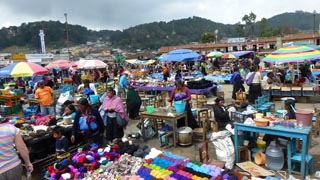
It is also market day, what luck.
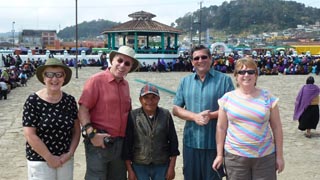 Mayan ruins indicate they were small and to this day that is true of their direct decendants.
Mayan ruins indicate they were small and to this day that is true of their direct decendants.
We vist a weaving community who show us what they do. Invited to the kitchen, they cook Tortillias on an open fire for us. Accompanied by Salsa, Beans, Cheese, Pumpkin Seed and Chillies they are delicious. Only when all the dips run out do we stop eating.
 Our guide Alberto was one of the best you can imagine.
Our guide Alberto was one of the best you can imagine.
It is a short hop to Zinacantan where they mainly grow flowers. In the church, full of flowers to the ceiling, the elders are gathering with a group of abut 30 others. They are making a procession and boys with large baskets of rose leaves cast them on the floor ahead of the statue of Christ born on the shoulders of six men.
Each family here has their own land. They plant Corn in rows which grows 6 feet tall, under this they plant beans, which use the corn as a support to climb. Finally on the ground below they plant Squash, its broad leaves spread out protecting the roots of all three plants from the Sun and trapping moisture.
Agua Azul
Ahead of us is an ear popping five hour drive through the cloud forest on a winding mountain road. Our driver is Freddy and he is very, very good. We are moved to tip him well. After about two hours we stop at the end of a queue. A 60ft lorry carrying thousands of chickens has gone straight on at a sharp bend crashing though the jungle and coming to rest with back wheels ten feet in the air hanging over the road. The cab is smashed completely. This did not block the road but the rescue operation has done. Two winches deftly pull and strain until in one move they pop it back on the road. The shed load is fair game and a hoard of children scramble down to take as many chickens as they can. No fuss the traffic is quickly moving again. They did something like this a couple of days ago, and a couple of days ago before that. We continue to our stop at the Agua Azul Falls.
 With eye level clouds in the background, the white tow truck winches the back end of the lorry, while another truck around the corner, pulls the front end in the opposite direction
With eye level clouds in the background, the white tow truck winches the back end of the lorry, while another truck around the corner, pulls the front end in the opposite direction
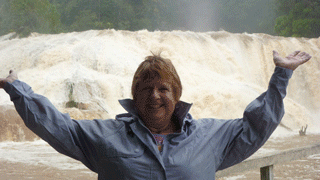
We continue on to Palenque where our rooms are spread out in small groups in the jungle and there is a nice pool.
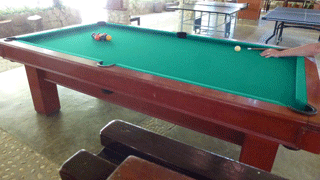
Legal break, potting two ball corner pocket, shot on the one ball, three in the side, four in the corner, five ball same pocket, three rails off the six, easy seven, long eight ball, roll in the nine.
Palenque Ruins

The ceremonial centre of Palenque where the leaders conducted their daily life and ran their city. The Temple of Inscriptions is particularly noteworthy as its intricate use of hieroglyphic text provides a unique insight into Mayan history and culture.
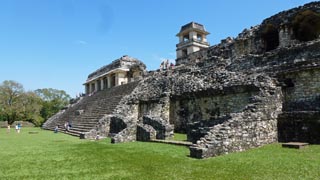
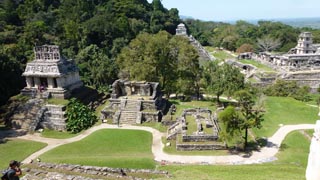 From the top of the Temple of the Sun.
From the top of the Temple of the Sun.
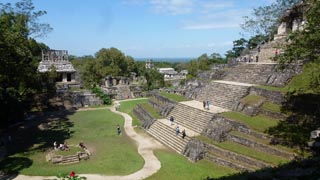 From the top of the Temple of the Moon.
From the top of the Temple of the Moon.

Thanks again to Alberto, this was a sensational visit.
AM2466 to Merida
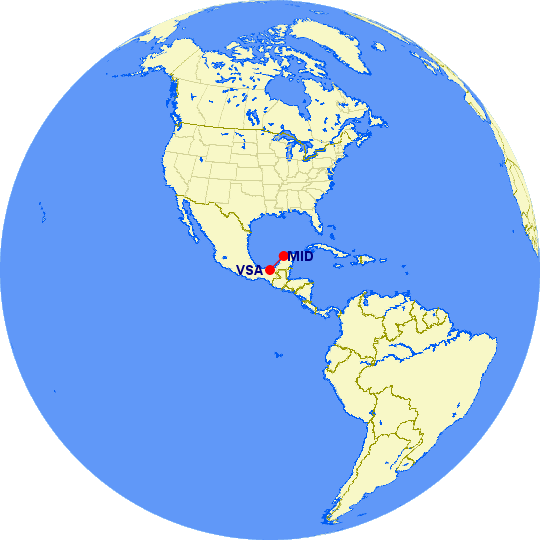
Flight AM2466 Aeromexico from Villharmosa to Merida. We go to our hotel in Merida with the evening at leisure.
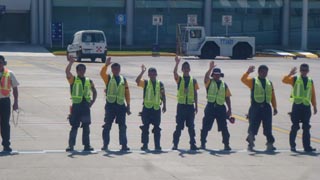 The ground crew line up to wave us away.
The ground crew line up to wave us away.
In the evening we find some locals performing their traditional dances.
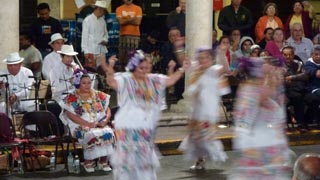
Merida is a great place to be. Large enought to have a selection of shops, sights and restaurants but small enough to be informal and fun.
Uxmal and Kabah
We wonder how so many ancient cities all over the world have so many things in common with each other when separated by vast times and distances. Raul our guide for the next few days, tells us that what archaeologists call cultural groups leave no trace on the face of the Earth. But monumental structures survive the passing of time. What we are looking at are the remains of an ancient civilisation. To qualify as a civilisation the following must be developed:
- social stratification and ranking,
- increasing sedentism,
- trade networks,
- luxury and exotic goods,
- metallurgy,
- craft specialization,
- control of food as in agriculture or pastoralism,
- high population density,
- monumental architecture,
- writing system,
- religious specialists such as shamans or priests,
- calendar,
- roads and transportation networks,
- centralized rule, and
- armed military force.
Today we explore the ruins of both Uxmal and Kabah situated to the South of Merida [MAPA]. Uxmal was an important city; probably built around 700AD, although inhabitants are thought to have lived in the area as far back as 800 BC - nearly 1,000 years before the city was built. It is a mystery as to why a settlement was ever made here as there are no rivers or local sources of water, and no evidence that they once existed. One of the features of Uxmal are the Mayan chultunes - or cisterns - which held water for the population to live from. Chaac, the rain god, features prominently in much of the architecture's carvings - no doubt an important source of water for these people. Uxmal is a delightful archaeological site to experience, the ancient city is a half-square-mile set in rich green fertile land which provides a perfect setting for some of the most magnificent ancient pyramids, building and temples of the ancient world.
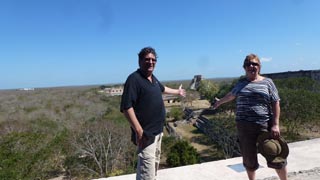
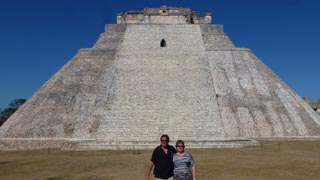
Kabah was connected by an 18Km stone causeway to Uxmal. A lone archway marks the end of the road. Purely ceremonial, there were no walls connected to it. Kabah is a much smaller site and archaeologists are leaving most of it undisturbed.

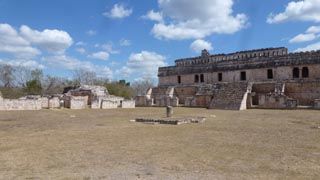
Hacienda
I have not mentioned the weather very much so far. It has been getting warmer since we arrived, due to our travelling South. Although still Winter, it is about 32c at 11 am with humidity. It gets much much hotter in the Summer. In Mexico if the temperature drops to 12c the schools close.
A late breakfast and a visit to the local Andy Warhol exhibition. The Governor's Building is a plain door onto the square looking unimportant, but inside it is a vast courtyard and in particular the history room is splendid.

Then a short drive out of town to a historic hacienda where we will stay tonight.
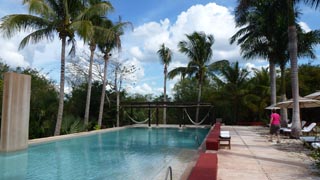
The hacienda has a large area of forest around it to explore. Many ruined buildings can be seen and a series of stone arches and walls would have divided the land in the past. An ancient aqueduct and irrigation stone work remains in the undergrowth of the forest. The Hasienda would have played an important role in the economy of the area at one time. Now these are being transformed into sustainable tourism. The local inhabitants being trained to run them.

OK, there is a tree in the bathroom growing through the roof. Break out the insect repellant. Like most Hasiendas, the emphasis is on spa treatments, massages, tranquillity and luxury. Luckily (VBG) we are only here for one night.
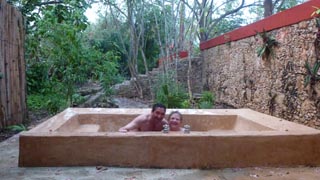
However we decide to take a bath which, unlike the tree, is outside. Liz adds flower petals and crystals. A rainstorm starts while we are in the bath. Huge coolish drops of water shower down through the branches of the trees overhead. Sensational.
To Chichén Itzá
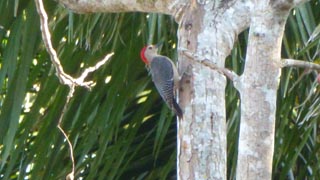
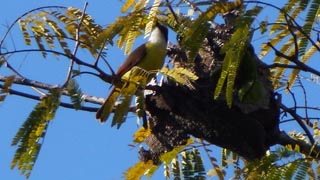
We wander all around the Hasienda in the early morning, good for bird watching. Then we set off on a drive to Chichen Itza. The terrain is unchanging and uninspiring so we chat with Raul, and Liz catches up with the Archers on the back seat. Our hotel is only five minutes walk from the entrance to the archaeological site. We have dinner and prepare for an early start in the morning.
At Chichén Itzá
The famous Mayan pyramids of Chichén Itzá are over 1500 years old.
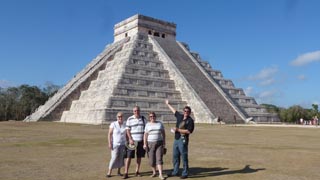
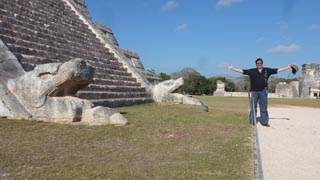
The largest ball court in Mesoamerica, measuring 168 metres in length and 70 metres in width, where Mayan men played a game called pok ta pok. Anthropologists believe that the object of the game was to hurl a ball through a ring that was mounted on a wall, seven metres above the ground. Each team had six field players who would attempt to pass the ball, using any body part except their hands, to their captain who would attempt the shot using a racket of sorts.
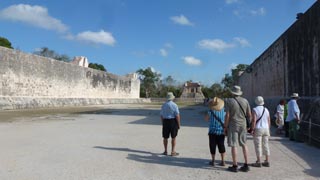
But when you go there it looks like Real Tennis from Hampton Court on a large scale. The rings obviously held an enormous net up. The sloping side plinths returned the ball into play. Why would the court be so long with goals so close to each other? Occasionally and rarely would the ball pass through the stone rings by chance, and this could be regarded as auspicious, I SUPPOSE. Nothing will convince me this was anything else but Beach Volleyball on a big scale.
The Cenote Sagrado, a large sinkhole that measures 60 metres in diameter. All sorts of treasures have been found here including rings, necklaces, gold and jade objects, as well as the bones of young women that were thrown into the water as an offering to Chaac, the Mayan rain god.
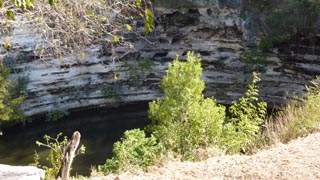
Naah, do not like this sory either. I want more dating evidence, but the internet is flaky so I must wait. But other things are certainly a mathematical message from the Mayans to us here in their future. The numbers of the levels, steps, niches and other icons are all to do with the yearly cycle of the Earth around the Sun. Here is where the Snake God becomes illuminated on one day in the year. A day when over thirty thousand people come to see it happen. We leave at lunch time and take a shorter drive to Tulum for the final hotel, located on the beach.
Tulum
Many thanks to Raul, our guide for the last three days. Apart from politely listening to my alternative theories about Mayan ball games cooked up over a bottle of Jack Daniels in an hour or so, he has been so much fun and allowed us to be flexible.
Most people come to Tulum here to relax for a few days at the end of their trip on a delightful white sandy beach and we are no different.
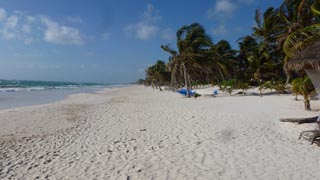
At Leisure. This is a seriously good beach experience. You can walk into the sea or the pools without feeling any coldness at all. The staff all know you and you can get anything you want whenever you want. There is a trio, Marimba, Guitar and Trombone playing a Jazzy sort of beach music at dinner.
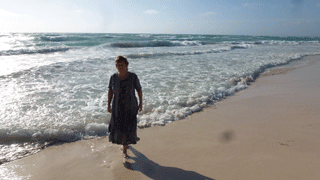
Tulum Ruins
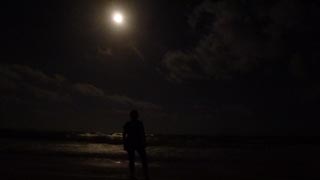 We travelled from New to Full Moon.
We travelled from New to Full Moon.
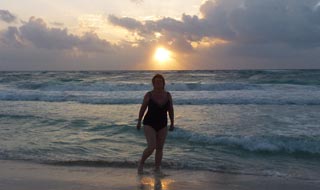
Relaxing is ok but after a sunrise dip, we can not resist an excursion by taxi to see the seaside Mayan ruins of Tulum. They are built on some cliffs near our hotel. The Mayans would navigate the coastal regions in canoes, hugging the coast line, and as such this was an important port for the area. These are not monumental ruins. They are displayed pleasantly in a park environment with many beautiful miradores all along the way. And that is just about it. Back we go for another club sandwich, Pina Colapsa, rest and dinner, before packing up and making our way home to England's green and pleasant lands.
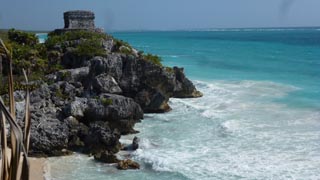
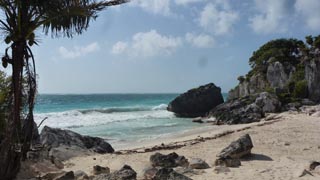 A protected Turtle Beach is at the center of Tulum
A protected Turtle Beach is at the center of Tulum
Home
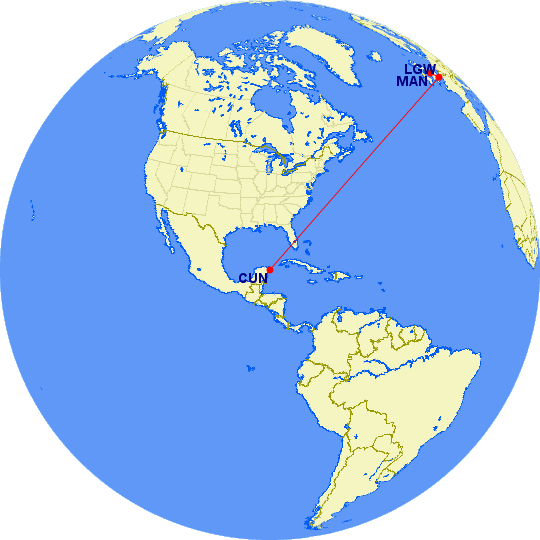
Flight BA2202 British Airways. Now to figure out how to remove the dust (collected in Jordan) from inside my camera lens.
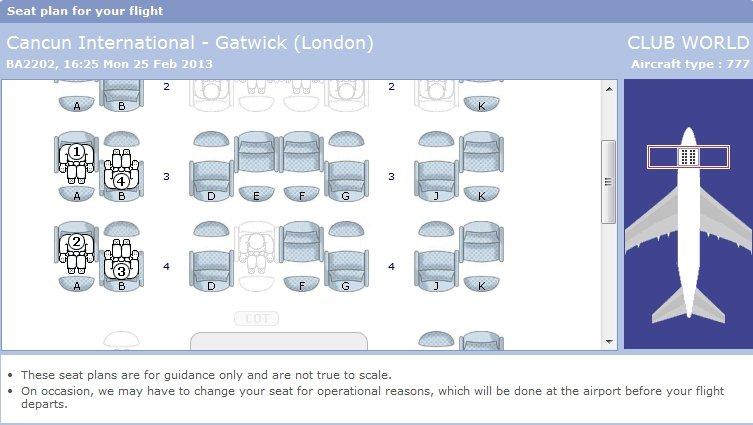
Time to reflect with my feet up over the Atlantic:
- The scorching heat can be dry and can be humid. Mexicans are used to it but we can not imagine Summer climate.
- Despite being reduced in size by half during the war with the USA Mexico is still vast and diverse, we only scratched the surface going to four of thirty one states.
- The food, very good and sometimes very hot spicy.
- Our preconceptions of Mexico were, well, simply wrong.
- Mexico is very modern and kind and courteous to its visitors. Free Internet everywhere you go is unlike other places, for example, Heathrow where it is £12 for 24 hours.
- The people are great, some do not speak English so some Espangnole is useful..
2012 phenomenon
The 2012 phenomenon was a jaunty story inaccurately reported widely in the UK as a prediction of the end of the world on 21st December 2012. In fact the date was regarded as the end-date of a 5,125-year-long cycle in the Mesoamerican Long Count calendar. As such, Mayan festivities to commemorate the date took place on 21 December 2012 in the countries that were part of the Mayan empire (Mexico, Guatemala, Honduras, and El Salvador), with main events at Chichén Itzá in Mexico, and Tikal in Guatemala.
Well, we missed it here by a mere 50 days, not so much in the scale of things.
Bonus Photos
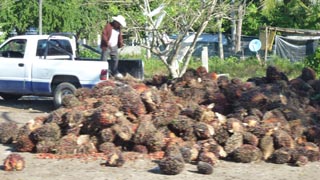 This man makes calendars and has just had his dates delivered.
This man makes calendars and has just had his dates delivered.
 Palenque sarcophagus. Von Danekin's theory of a spaceship when turned 90 degrees.
Palenque sarcophagus. Von Danekin's theory of a spaceship when turned 90 degrees.
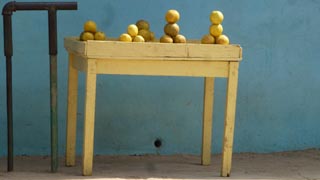 The inspireation is of course ELEMENTRY.
The inspireation is of course ELEMENTRY.
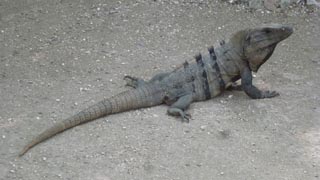 noh, eees hamsta.
noh, eees hamsta.
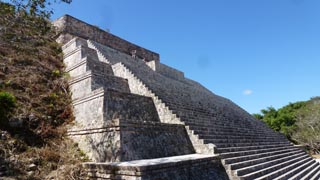 Uxmal: They have left half the pyramid in an unexcavated state as a contrast.
Uxmal: They have left half the pyramid in an unexcavated state as a contrast.
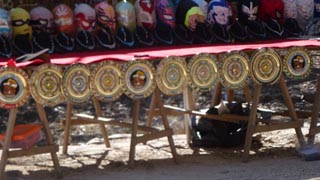 We found the man selling the plates imported from Blackpool at Chichén Itzá.
We found the man selling the plates imported from Blackpool at Chichén Itzá.